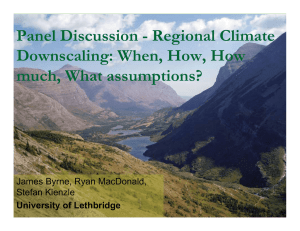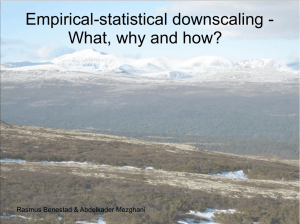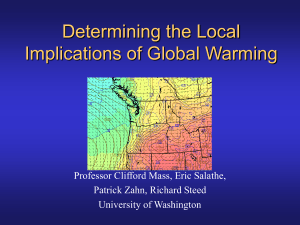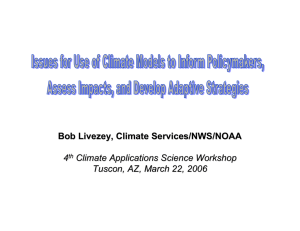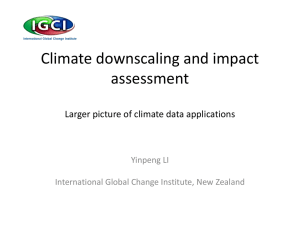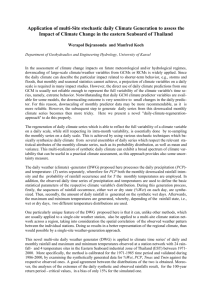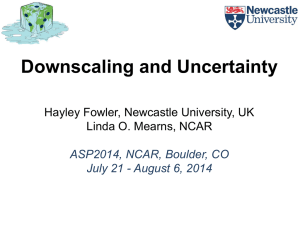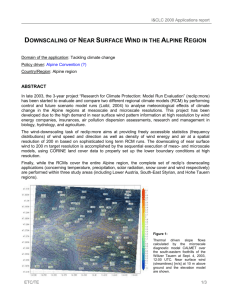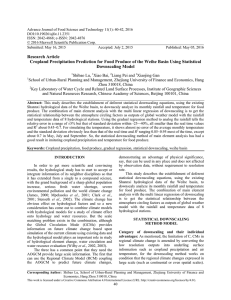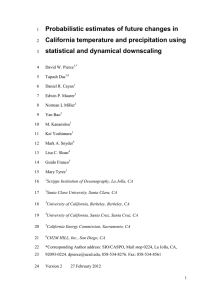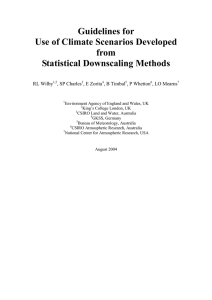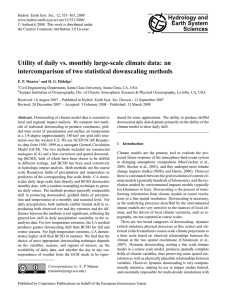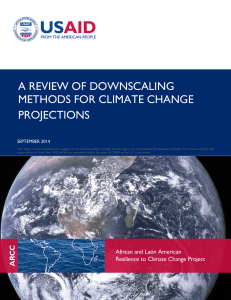Testing and improving model physics, downscaling, and parameterizations Discussion Lead: Rapporteur:
advertisement
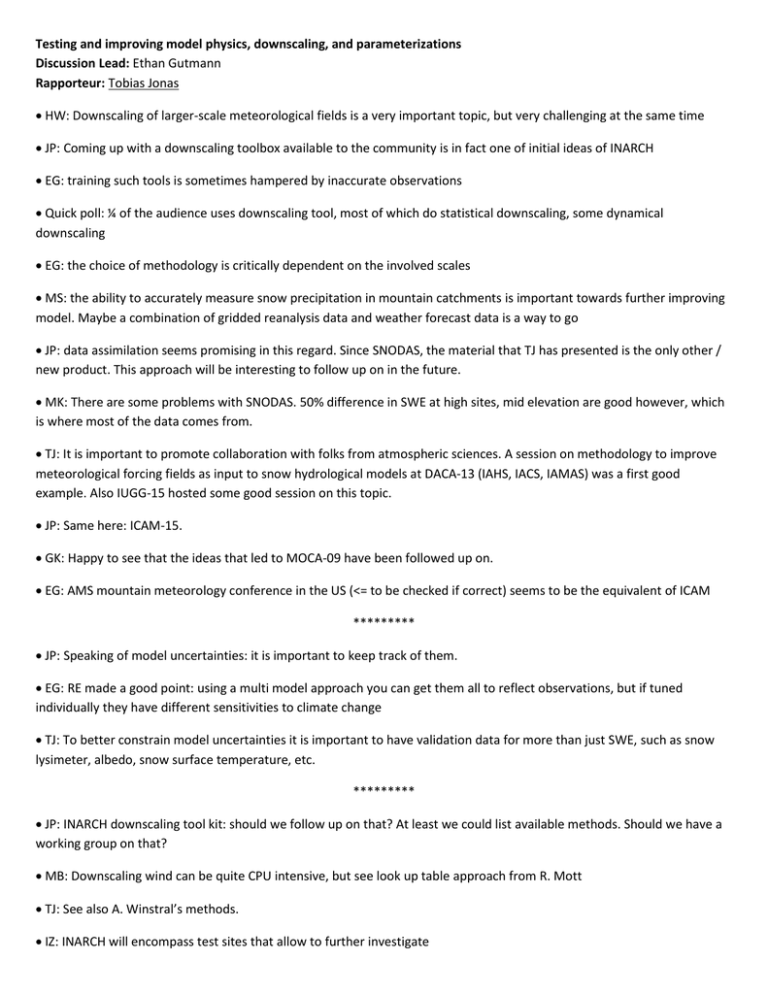
Testing and improving model physics, downscaling, and parameterizations Discussion Lead: Ethan Gutmann Rapporteur: Tobias Jonas HW: Downscaling of larger-scale meteorological fields is a very important topic, but very challenging at the same time JP: Coming up with a downscaling toolbox available to the community is in fact one of initial ideas of INARCH EG: training such tools is sometimes hampered by inaccurate observations Quick poll: ¼ of the audience uses downscaling tool, most of which do statistical downscaling, some dynamical downscaling EG: the choice of methodology is critically dependent on the involved scales MS: the ability to accurately measure snow precipitation in mountain catchments is important towards further improving model. Maybe a combination of gridded reanalysis data and weather forecast data is a way to go JP: data assimilation seems promising in this regard. Since SNODAS, the material that TJ has presented is the only other / new product. This approach will be interesting to follow up on in the future. MK: There are some problems with SNODAS. 50% difference in SWE at high sites, mid elevation are good however, which is where most of the data comes from. TJ: It is important to promote collaboration with folks from atmospheric sciences. A session on methodology to improve meteorological forcing fields as input to snow hydrological models at DACA-13 (IAHS, IACS, IAMAS) was a first good example. Also IUGG-15 hosted some good session on this topic. JP: Same here: ICAM-15. GK: Happy to see that the ideas that led to MOCA-09 have been followed up on. EG: AMS mountain meteorology conference in the US (<= to be checked if correct) seems to be the equivalent of ICAM ********* JP: Speaking of model uncertainties: it is important to keep track of them. EG: RE made a good point: using a multi model approach you can get them all to reflect observations, but if tuned individually they have different sensitivities to climate change TJ: To better constrain model uncertainties it is important to have validation data for more than just SWE, such as snow lysimeter, albedo, snow surface temperature, etc. ********* JP: INARCH downscaling tool kit: should we follow up on that? At least we could list available methods. Should we have a working group on that? MB: Downscaling wind can be quite CPU intensive, but see look up table approach from R. Mott TJ: See also A. Winstral’s methods. IZ: INARCH will encompass test sites that allow to further investigate ********* MS: what do we actually need, do we need all these detailed processes to get better hydrographs?. JP: Let’s do sensitivity tests to find out EP: in this case, you need to recalibrate your runoff model every time to iterate you input data. MB: we should also try to make complex approaches simpler to make them applicable if input data availability is limited. GK: I like to support MB. This is quite important. Needed model complexity could be tested using data denial experiments. TJ: also supports MB’s vote. Model development research should not become too disconnected from needs regarding operational applications MK: There are still people who use spread sheet model to predict snow melt. ********* IZ: having talked about downscaling, what about upscaling? HW: SnowMIP is going in this direction JP: Then why not include Dischma (catchment) with Weissfluhjoch dataset (point scale) which has been assigned as a SnowMIP site? ********* Contributors: EG = Ethan Gutmann, HW = Howard Wheater , JP = John Pomeroy, MS: Michael Schirmer, TJ: Tobias Jonas, MK: McKenzie Skiles, GK: Georg Kaser, RE: Richard Essery, MB: Matthias Bernhardt, IZ: Isabella Zin
